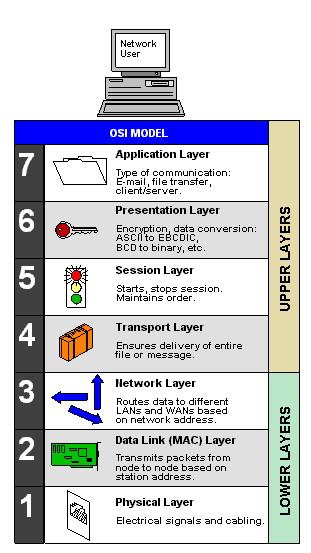OSI Model

OSI Model ( O pen S ystems I nterconnection model) The International Standards Organization's OSI model serves as a standard template for describing a network protocol stack. The Protocol Stack Using TCP/IP as a model, the sending application hands data to the transport layer, which breaks it up into the packets required by the network. It stores the sequence number and other data in its header. The network layer adds source and destination data in its header, and the data link layer adds station data in its header. On the other side, the corresponding layer reads and processes the headers and discards them. Upper Layers Layers 7 through 4 comprise the upper layers of the OSI protocol stack. They are more geared to the type of application than the lower layers, which are designed to move packets, no matter what they contain, from one place to another. Application Layer 7 This top layer defines the language and syntax that p...